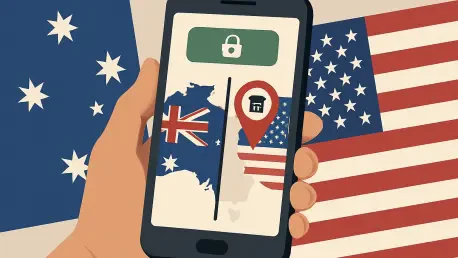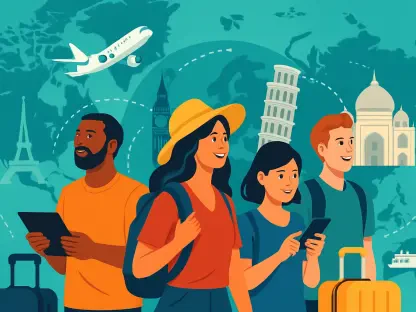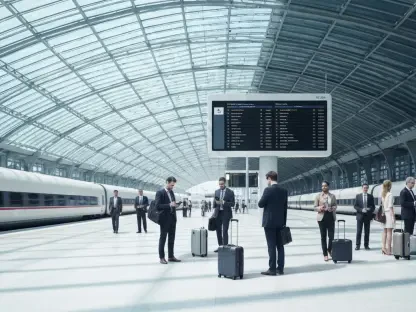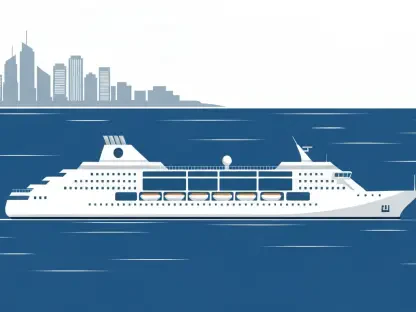For Australian travelers, entering the United States has long been a daunting experience marked by uncertainty and lengthy waits at customs. After enduring a grueling 14-hour flight across the Pacific, passengers often find themselves facing unpredictable delays in crowded airport terminals, with wait times that can stretch for hours in snaking lines or, on rare occasions, a swift passage through an empty queue. The anxiety of not knowing what to expect at the border adds an extra layer of stress to an already exhausting journey. However, recent developments in US entry programs have introduced new options that promise to streamline the process for Aussies. With initiatives like Global Entry and the lesser-known Mobile Passport Control (MPC) app now accessible to travelers on an ESTA (Electronic System for Travel Authorization), the landscape of border crossings is shifting. This article explores these emerging solutions, delving into their accessibility, application processes, and real-world effectiveness for Australian visitors.
1. Exploring Global Entry for Australians
Global Entry, one of the US Trusted Traveler Programs, has been a sought-after solution for frequent international travelers seeking expedited entry into the United States. Since early this year, Australians traveling on an ESTA have been eligible to apply for this program, marking a significant step forward after years of negotiations. However, the initial phase of the rollout was limited to just 1,000 participants and came with strict eligibility criteria, such as requiring applicants to have visited the US at least five times in the preceding 12 months. Although phase one has concluded, a second phase is anticipated to launch later this year, potentially with more relaxed requirements. This could open the door for a broader range of Australian travelers to benefit from faster border processing, reducing the stress of long customs waits and providing a more predictable entry experience at major US airports.
Applying for Global Entry, however, is not a simple task for Australians. The process begins with submitting an application through the US Department of Homeland Security website, accompanied by a non-refundable fee of $120 USD. Additionally, applicants must complete a separate form on the Australian Government’s Department of Home Affairs website and consent to a background check. If approved through these initial steps, an in-person interview at a Global Entry Enrollment Center or at designated airports upon arrival is required. This multi-step procedure can be time-consuming and may deter some travelers from pursuing the program, especially those who do not frequently visit the US. Despite these hurdles, the promise of expedited entry for low-risk passengers makes Global Entry an attractive option for those willing to navigate the bureaucratic process, potentially transforming their travel experience.
2. Unveiling the Mobile Passport Control App
For Australians seeking a simpler alternative to Global Entry, the Mobile Passport Control (MPC) app offers a promising and less publicized option. Available since early last year to travelers from Visa Waiver Program countries, including Australia, this free app facilitates shorter wait times at 35 US airports, covering all major entry points for Aussies. Users can download the app before departure and set up a profile by entering passport details. Upon nearing arrival, travelers complete a submission form within the app, answering standard questions about their trip and customs declarations. This digital approach eliminates much of the paperwork traditionally associated with border entry, offering a modern solution to an age-old problem. The app’s accessibility and ease of use make it a viable choice for those looking to bypass lengthy queues without the complexities of other programs.
While the MPC app is user-friendly, there are minor inconveniences to note. Submissions cannot be finalized until arrival due to the need for internet access, requiring travelers to either use roaming data or connect to airport Wi-Fi. During the process, a selfie is taken for verification, and once processed—often within seconds—a digital receipt valid for four hours is issued, directing users to a dedicated MPC lane. These lanes are frequently less crowded, allowing for a quicker interaction with customs officers. The app also supports group travel, enabling up to 12 individuals to be processed under a single submission, which is particularly beneficial for families or business groups. For many Australians, this streamlined method has proven to be a game-changer, significantly cutting down the time spent in arrivals halls and offering a glimpse of efficiency in an otherwise tedious process.
3. Real-World Impact on Travel Efficiency
The practical benefits of using tools like the MPC app are evident in the experiences of Australian travelers at busy US airports. Upon landing at major hubs, such as San Francisco International Airport, visitors often encounter overwhelming crowds in the customs area, with wait times that can sap energy and patience. However, those utilizing the dedicated MPC lanes frequently find themselves moving through with minimal delay, often completing the process in under half an hour from plane to terminal exit. This stark contrast to the standard queues highlights the app’s potential to redefine border crossings for Aussies. The ability to answer a few quick questions and bypass the throngs of waiting passengers offers not just time savings but also a reduction in travel-related stress, making the journey more enjoyable.
Beyond individual experiences, the broader implications of these programs signal a shift in how international travel is managed. The introduction of digital tools like MPC alongside structured programs like Global Entry reflects a growing emphasis on efficiency and technology at US borders. For Australians, this means more options to tailor their travel planning based on frequency of visits and personal convenience. While Global Entry may suit regular travelers willing to invest time and money in the application, the MPC app caters to a wider audience seeking immediate, cost-free relief from long waits. As these initiatives continue to evolve, with potential expansions in eligibility and functionality, the future of trans-Pacific travel looks increasingly seamless, promising a more predictable and efficient entry process for all.
4. Looking Back at Transformative Solutions
Reflecting on the strides made in easing US entry for Australians, it is clear that both Global Entry and the Mobile Passport Control app have begun to reshape the travel landscape. The frustration of enduring endless customs lines after long-haul flights has been met with innovative responses that prioritize speed and convenience. These tools have offered tangible relief, cutting down processing times and providing a sense of control over an often unpredictable experience. For many, the shift from hours of waiting to mere minutes at the border marks a significant improvement, underscoring the impact of technology on international travel. As these programs gain traction, they set a precedent for how digital solutions and structured initiatives can coexist to address traveler needs. Moving forward, the focus should remain on expanding access to such options, ensuring that more Australians can benefit from streamlined processes, and advocating for even simpler eligibility criteria in future phases of these programs.









